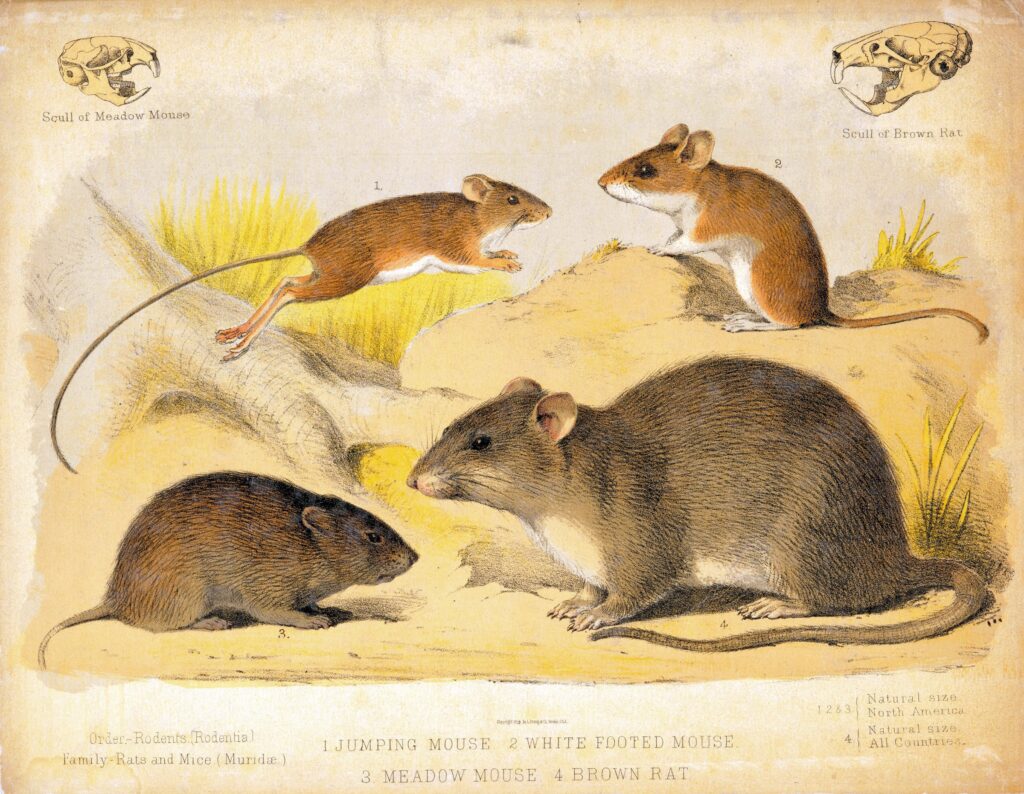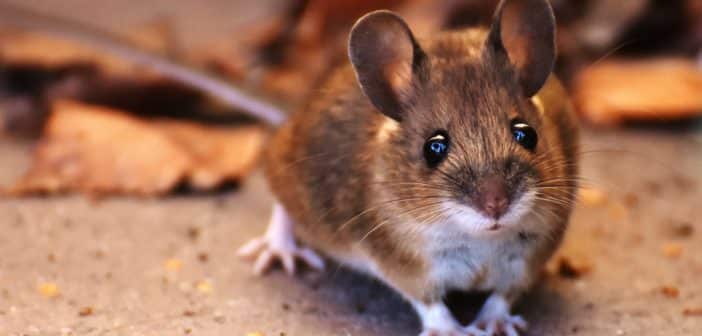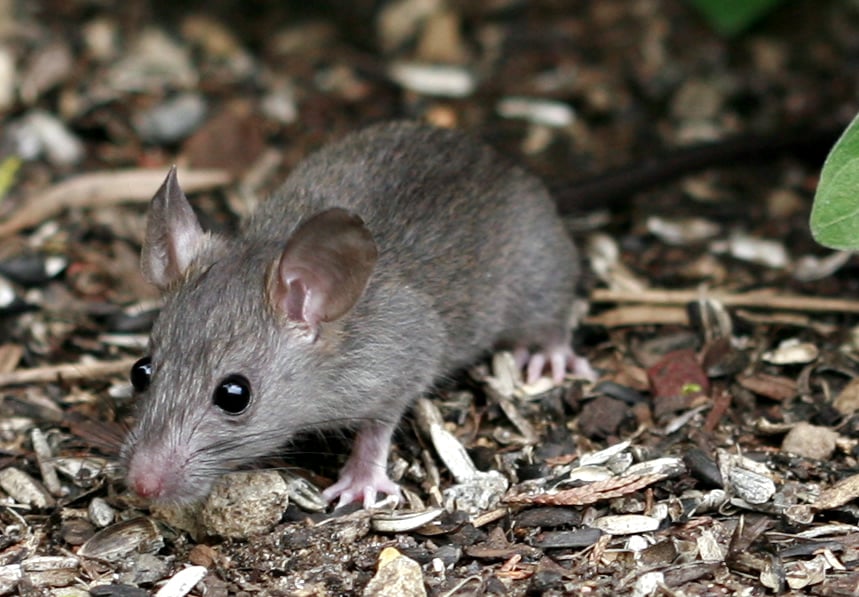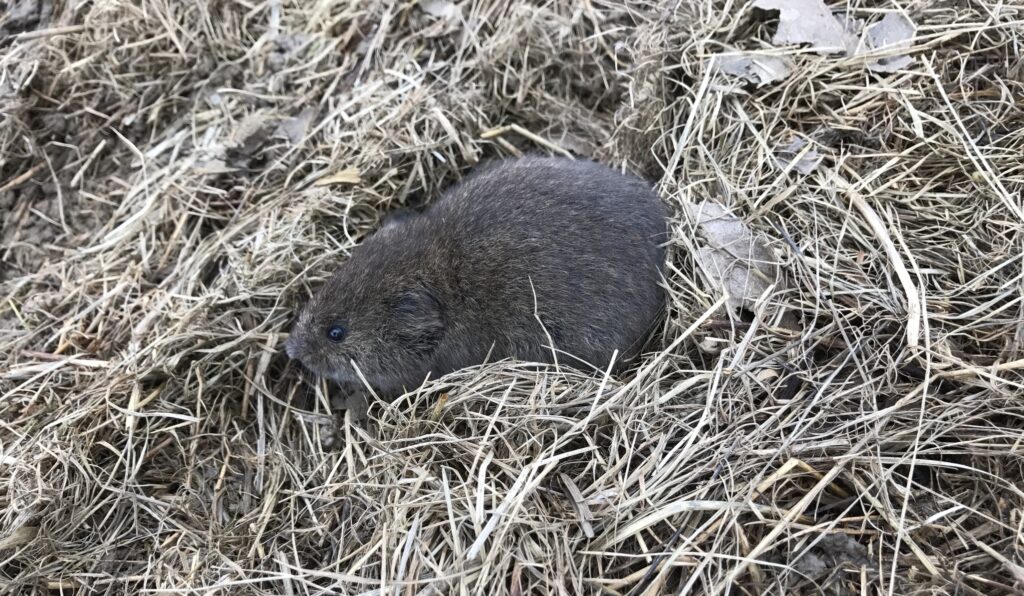What’s the difference between a mouse and a rat?
Mice have more delicate features and a more pointed snout. Their tail is thinner than a rat’s, which is thick and more obvious. There are also chromosomal differences, which prevent interbreeding. Although rats and mice probably had a common ancestor, they aren’t friends.

Lithograph of four rodents: Jumping Mouse (Zapus hudsonius), White-footed mouse (Peromyscus leucopus), Meadow Mouse (Microtus pennsylvanicus), and Brown Rat (Rattus norvegicus). Also, the skulls of the Meadow Mouse and Brown Rat. Copyright 1873 by L. Prang & Co. (Uploaded by Epolk / Wiki; PD)
What is the difference between House Mice and Field Mice
Don’t mice carry diseases?
Deer Mice (Peromyscus spp.) are connected to hantaviruses, which can be spread to people, but the House Mouse is not. (A study reported in New Scientist Magazine1 shows that the greater the mammal diversity in your yard, the less chance that the Deer Mice living there will be infected with hantaviruses.) House Mice are associated with some other diseases, however, such as typhus and salmonella. Your chance of contracting diseases from any species of wild mouse is low unless you put yourself at risk by handling them or inhaling their dried fecal droppings.
All mice should be respected for the vital role they play outside, but promptly remove any that invade your home. If you happen to handle a mouse, be sure to wash your hands thoroughly afterward. Be aware, too, that mice may bite in self-defense. (Hopefully, you’ll trap mice humanely to be released outdoors. Don’t touch baby mice; mothers will kill those that smell of human scent.)
Can I keep a wild mouse as a pet?
Did you manage to catch a wild mouse? It won’t make a good pet. Wild mice are nervous and skittish, cannot be easily tamed, don’t want to be handled, and always think about getting away. This is torment for the mouse and no fun for you. The best thing to do is release it early in the morning, after giving it some breakfast. See further below for more information about this.
Mice are vermin . . . aren’t they?
Well, our web name, WelcomeWildlife, pretty much says it all—we’re all about wild-life, not wild-death. Vermin is a hateful word for sentient animals that are too often given no thought and whose lives are seen not to matter. But the truth is that mice play an essential role in nature as a primary food source for predators, while simply looking for ways to survive, as all animals must. Of course, nobody wants them in their homes, but if that happens, they can be trapped humanely and released outdoors.
There are non-lethal, common-sense ways to control rodent populations in a yard, such as eliminating potential nesting places and easy sources of food for them. Also, a wildlife-friendly yard plays host to many predator animals that feed on mice, which helps to keep their population under control. Check out this page that’s all about the House Mouse.
How to humanely remove mice from a house
Or, try putting peanuts in the bottom of a deep bucket. Set the bucket on the trail and place a couple of boxes next to it to serve as stairsteps to the top. If the bucket’s deep enough, the mouse can’t get out once it jumps in.
Release the mouse early in the morning, far away from your house, or it’ll find its way back (no kidding), and the second time around, it will be smarter and harder to catch. A morning release gives it a chance to find a good hiding place to build a nest before nightfall. Tall grasses, a brush pile, undergrowth, or other conditions that will help shield it from birds of prey will provide a safe place for the mouse.
1 New Scientist Magazine, July 4, 2009
More reading:
How to humanely remove other wildlife from people spaces
Provide cover for safety, shelter








